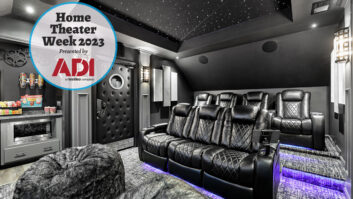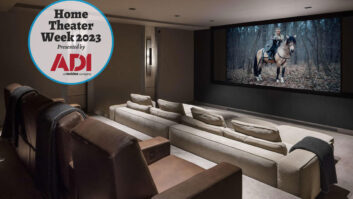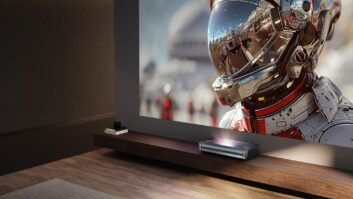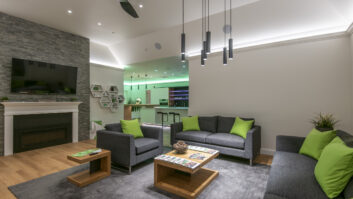Working independent of one another on this month’s issue, Sam Cavitt and I both referenced the classic THX title card from theater days gone by (here is Sam’s and here is mine). If you are of a certain age, you know what I am referring to — a dark screen, a rumbling sound that hits you in your chest, then crescendos to dramatic levels, leaving you with a full-screen THX logo and the tagline “The Audience is Listening” beneath it.
And while the title card may be gone, the audience is still listening — just in different ways. With movie theaters still mostly closed, the home theater has become the spot to get lost in cinema. But if we are being completely honest, for years now the majority of the home theaters we created were already scores better than what you would find at multiplexes. With the current situation, the awareness of that fact is spreading quickly.
Still, when we see the oft-used marketing phrase “heard just as the creators intended,” clients think of commercial theaters as the model because that is the experience they have had. However, in the music world, that phrase evokes images of the listener being in the studio with the artist as it is being recorded, so the goal is to make a sound system that rivals top recording studios.
The counterpart for home theaters, then, would to re-create the experience of listening to a film on post-production mixing stage. Many Academy Award winners in the Sound categories come from Sony Pictures Studios, and once you see its Cary Grant Theater and other post-production mixing facilities, you can see why. If you are looking to re-create those exact spaces, Cortex VIP is designed to do just that (at a hefty price tag).
Of course, film sound mixing has changed as much as film making has in the past few years, and the latest post-production studios being built may seem familiar in that they use technology and techniques that are employed in the building of home theaters.
Take Sony’s Crystal LED for example — we recently ran a story about the first residential installation, and the integrator, AVIR’s Yasin Chaudhry, sealed the deal by taking his client to see the one in use at Glendale, CA’s Digital Motion Production Center.
Crystal LED also played a part in Netflix’s new post-production studio, as covered by our sister publication, Mix. There, the high-end screen was paired with Meyer Sound’s new Ultra Reflex Sound Solution, which is designed to be paired with direct view screens. With direct view, the speakers can’t be placed behind the screen, so you have to place the screen channels around it. The Ultra Reflex solution works by reflecting the sound off the screen. Yes, you read that right. And you aren’t alone in your surprise.
In the Mix article, the room’s designer and integrator, Ron Lagerlof of Visioneering Design, says, “Quite frankly, when I heard what Meyer Sound was planning, my first thought was, ‘Are you kidding me? We’re going to get this off the screen?’ But when I actually heard it, I noticed right off the bat that the clarity, the detail, was so much better, and the image was astounding. And I’m hearing reverbs and room tones and detail that you normally don’t hear coming from speakers behind a screen; it’s just there. Basically, my ears are telling me that what I’m hearing is accurate. Plus, the off-axis imaging is amazing. You can sit at the end of the console and still clearly hear the whole sound stage. It has a really nice, broad sweet spot.”
While known for professional installations, Meyer Sound is making inroads into the luxury home theater market — we recently featured Meyer Sound’s Bluehorn speaker system in a home cinema installation.
Other familiar tools in the Netflix facility include Crestron control and a Trinnov Altitude 32 AV processor. The room, as expected, is Dolby Atmos capable.
The similarities in this post-production room to the luxury home theaters we create show that — like Sam and I making the exact same reference — great minds do indeed think alike.







